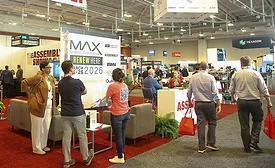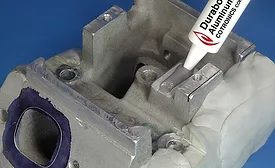Home » sealants in assembly
Articles Tagged with ''sealants in assembly''
The ASSEMBLY Show 2025 offers attendees hands-on opportunities with cutting-edge technologies and education from industry experts.
Read More
New Research Investigates Innovative Possibilities for Process Monitoring of Sealants
Inline-capable measuring techniques should enable quality assurance of applied sealants in the future.
December 20, 2024
Sealing Cell Module Controllers with the CIPG Process
During the production of battery sensors, highly viscous liquid sealants are used to protect these sensitive electronic components from external influences and temperature-related stress and physical shock and vibrations.
October 15, 2024
Adhesives for Lightweighting of Structures—Drivers, Selection, Challenges
Lightweighting of structures and combining of materials to take advantage of their best properties is becoming a part of engineering design, and adhesives will play an increasing role in those future designs and applications.
October 27, 2022
ASSEMBLY Show Celebrates 10 Years of Learning and Connecting
The ASSEMBLY Show gives industry professionals an opportunity to see the most up-to-date technologies in assembly manufacturing.
October 18, 2022
Post-Cure Advantages for Silicone Elastomers and Adhesives
Whether using a silicone adhesive in an aerospace assembly or manufacturing silicone bakeware, post-cure for silicone is not a process that belongs in the past.
August 5, 2022
Keep the info flowing with our newsletters!
Get the latest industry updates tailored your way.
JOIN TODAY!Copyright ©2026. All Rights Reserved BNP Media.
Design, CMS, Hosting & Web Development :: ePublishing











